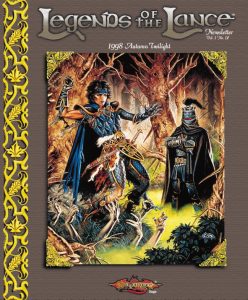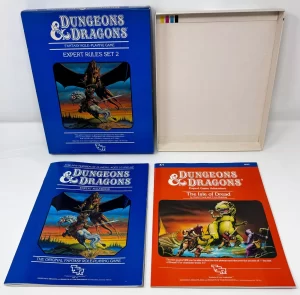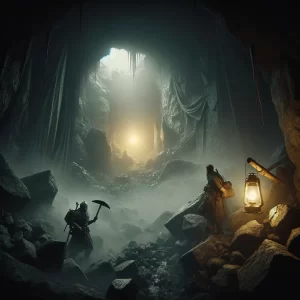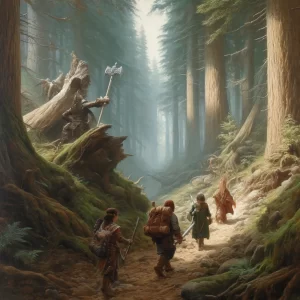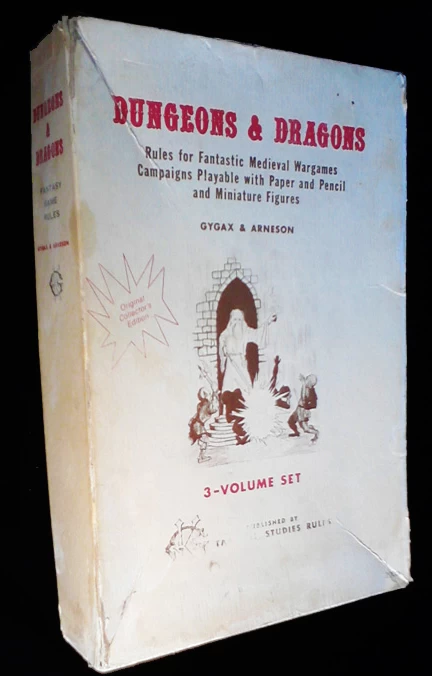
The year was 1974, a time when board games were primarily based on luck and chance. A new frontier was about to be discovered in the world of gaming, where players could enter fantastical realms, battling dragons and unearthing treasures. Enter "Dungeons & Dragons: Original Edition," also known as the D&D white box set. This game would redefine entertainment and spark a revolution.
The Beginning
The Visionaries: Gary Gygax and Dave Arneson
Gary Gygax and Dave Arneson, two friends united by their love for games, embarked on a journey to create something that had never been done before. Combining elements of traditional wargaming with imaginative storytelling, they crafted the original Dungeons & Dragons (D&D) white box set.
The inspiration for D&D came from their shared interest in fantasy novels and their dissatisfaction with existing games. They envisioned a game where individual players could control characters and influence the story, rather than merely rolling dice.
Their collaboration resulted in an immersive world where players could embark on fantastical quests and adventures. D&D was a gateway to creativity, problem-solving, and social interaction.
Inside the White Box
Men & Magic
Character creation was at the heart of D&D. Players could choose classes such as Fighter, Magic-User, and Cleric, and their attributes were determined through dice rolls. The "Men & Magic" booklet also introduced the concept of experience points, leveling up, spells, and magic items. These mechanics allowed players to grow and evolve, mirroring a hero's journey in literature.
Monsters & Treasure
The "Monsters & Treasure" booklet served as the game master's guide, containing an array of monsters, creatures, and adversaries. Each monster was described meticulously, from its appearance to its abilities. Treasures and magical items were also detailed, offering rewards for successful adventures and adding layers of excitement.
The Underworld & Wilderness Adventures
Exploration was a significant part of D&D, and "The Underworld & Wilderness Adventures" booklet laid down the guidelines for mapping, encounter tables, and navigating perilous areas. Whether exploring dank dungeons or vast wildernesses, players had to rely on their wits, courage, and collaboration.
The Legacy
A New Beginning
The original D&D white box set was a precursor to something greater. It laid the foundation for subsequent editions and versions of Dungeons & Dragons. The game evolved, giving rise to more complex editions like the "Dungeons & Dragons Basic Set" and "Dungeons & Dragons Expert Set," each refining and expanding the rules.
D&D's success spurred the creation of other tabletop role-playing games. The mechanics and ideas from D&D were adapted into different genres and settings, widening the appeal of role-playing games.
The original white box set marked the birth of tabletop role-playing games (RPGs), a genre that was both novel and groundbreaking. Its unique blend of narrative and gameplay captured the hearts and minds of gamers worldwide.
Cultural Influence
Its influence reached beyond gaming; D&D inspired novels, movies, and an entire subculture devoted to fantasy. It became a social phenomenon, fostering friendships and communities.
Dungeons & Dragons was more than a game; it was a cultural milestone that transcended traditional boundaries of entertainment. Through intricate storytelling, imaginative gameplay, and boundless creativity, D&D has remained a beloved pastime for generations of players. Its legacy resonates today, reflecting humanity's enduring desire to explore, create, and connect in fantastical worlds of our own making.
The original D&D white box set will forever be remembered as a beacon of innovation, igniting a revolution in gaming that continues to inspire and entertain.


